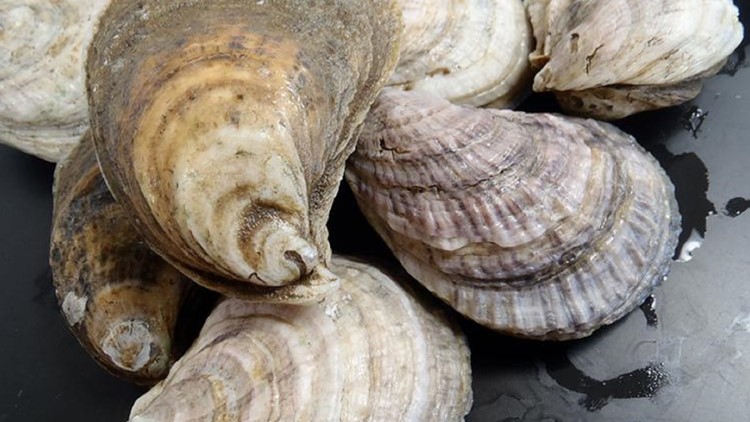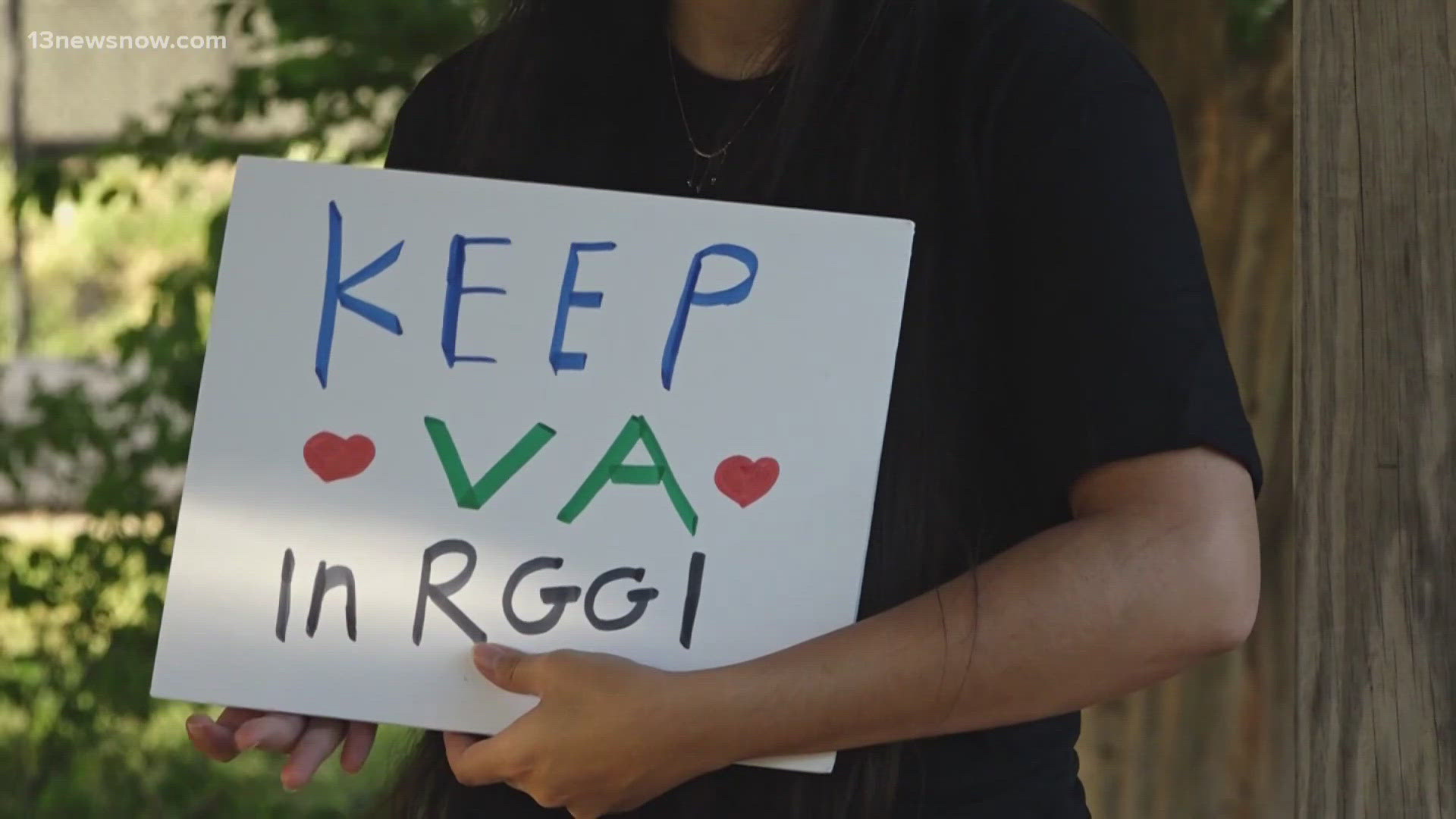VIRGINIA BEACH, Va. — UPDATE: The Chesapeake Bay Foundation (CBF) was ordered to stop work on three reefs in Virginia Beach after an inspection found the reefs were built with prohibited materials, according to a letter from the Virginia Marine Resources Commission (VMRC).
The agency said inspectors found asphalt, trash, metal wire and plastic at the Pleasure House Creek Oyster Reef, Browns Cove Reef and Keeling Drain Reef, all located in the Lynnhaven River.
The letter was sent on Wednesday after CBF submitted plans in June to address those issues.
The reefs are part of CBF's efforts to restore oyster populations in the Chesapeake Bay, which filter out sediment and algae in the water, as well as provide habitats for a variety of aquatic life. The foundation partnered with the organization Lynnhaven River NOW (LRN) to restore the river's reefs.
What inspectors found at the reefs
The first inspection happened on Jan. 5 when VMRC found asphalt, brick and concrete with metal wire running through it at the Pleasure House Creek Oyster Reef, the letter reads. The agency found more of those materials on June 1 after getting complaints from the public.
During an inspection of Browns Cove Reef on May 17 and 23, VMRC found concrete placed outside of the permitted reef footprint. The agency also found and recovered concrete with metal wire and asphalt on June 14 and 23.
At Keeling Drain Reef, VMRC said there's photographic evidence of plastic and paper waste stemming from the deployment of the concrete rubble base. The agency also recovered concrete rubble with wire and asphalt from the site on June 23.
Inspectors also found that an undetermined amount of concrete rubble used to construct the new reef was deployed on top of VMRC’s 25-year-old oyster broodstock sanctuary reef.
After the inspections, the Virginia Institute of Marine Science (VIMS) analyzed the samples and chunks of asphalt recovered from the sites.
The results found both the asphalt and concrete rubble used to construct the reefs released polycyclic aromatic hydrocarbons (PAHs), which are bad for people's health, according to the Centers for Disease Control and Prevention.
VIMS also concluded that asphalt material doesn't belong in the aquatic environment at all, the letter reads.
Chesapeake Bay Foundation's reef permits revoked, required to remove materials
In wake of the inspections, VMRC revoked the three permits authorizing the reef construction. CBF will have to submit a new application if it wants to work at these reef sites in the future, the letter reads.
CBF is also required to remove all of its reef material "to ensure public safety and abate adverse water quality impacts."
Within 30 days of the letter receipt, the foundation has to send a remediation plan addressing the removal to VMRC, the Virginia Department of Environmental Quality and the U.S. Army Corps of Engineers. They have to approve the plan before removal begins.
During the removal process, the reef material will have to be placed onto barges and taken to an approved disposal area. Once the work is done, a third-party inspector will make sure all the materials were removed and then submit a survey to VMRC.
VMRC warned that any violations of its orders, rules, regulations or permit conditions could lead to a maximum fine of $25,000 for each day of violation.
Macaulay Porter, a spokesperson for Gov. Glenn Youngkin, sent 13News Now the following statement regarding the VMRC's letter:
“The Chesapeake Bay Foundation's non-compliance with VMRC permits, including the prohibited use of asphalt, trash, metal wire, and plastic in these three reefs compelled the Administration to require complete removal of all reef material and revoke the VMRC permits. To ensure the safety of Virginians and to minimize water quality impacts, the Administration took appropriate action and will continue to ensure that we are cleaning up our water in Virginia in a thoughtful and effective way. Governor Youngkin's administration is committed to addressing Virginia's ongoing environmental, energy, and natural resources challenges, including taking necessary actions like this to protect the Chesapeake Bay.”
'We are surprised and disappointed': Chesapeake Bay Foundation responds
In a statement, CBF Senior Regional Ecosystem Scientist Chris Moore said the foundation is reviewing the notice to comply and is committed to fixing the issues in a way that will best protect the Lynnhaven River and the Chesapeake Bay watershed.
"To restore oysters in the Lynnhaven, VMRC approved the use of concrete, a key component in numerous successful oyster reefs across the Bay watershed," Moore said. "We are surprised and disappointed by this enforcement action, as we have been working to address concerns regarding the Lynnhaven reefs since first learning of them."
Moore added that the foundation will continue to work with partners and state agencies to ensure a strong oyster population in the Lynnhaven River.
"CBF is dedicated to restoring oyster reefs in the Chesapeake Bay and its tributaries," Moore said. "For decades, we have been safely and successfully restoring native oysters in Virginia’s tidal waterways, helping to clean these waters, creating more habitat for fish, crabs, and shrimp, and boosting the local economy. A healthy Lynnhaven River depends on thriving oyster reefs."
In an updated statement Friday, Moore said the concrete used to create the reefs was approved by VMRC, but the foundation was notified about the prohibited materials during the construction phase.
“During the construction phase, CBF and LRN learned from VMRC that a small amount of rebar, asphalt, and other material was included with the approved concrete placed in the river," Moore said. "We also learned that some oyster reef base was located outside of the approved area at one of the reefs. As soon as we were made aware of the issues, we began working with VMRC and LRN to locate and remove these materials and increase construction oversight."
Moore added: “Despite these efforts, on July 13 we received a request from VMRC to completely remove these reefs."



